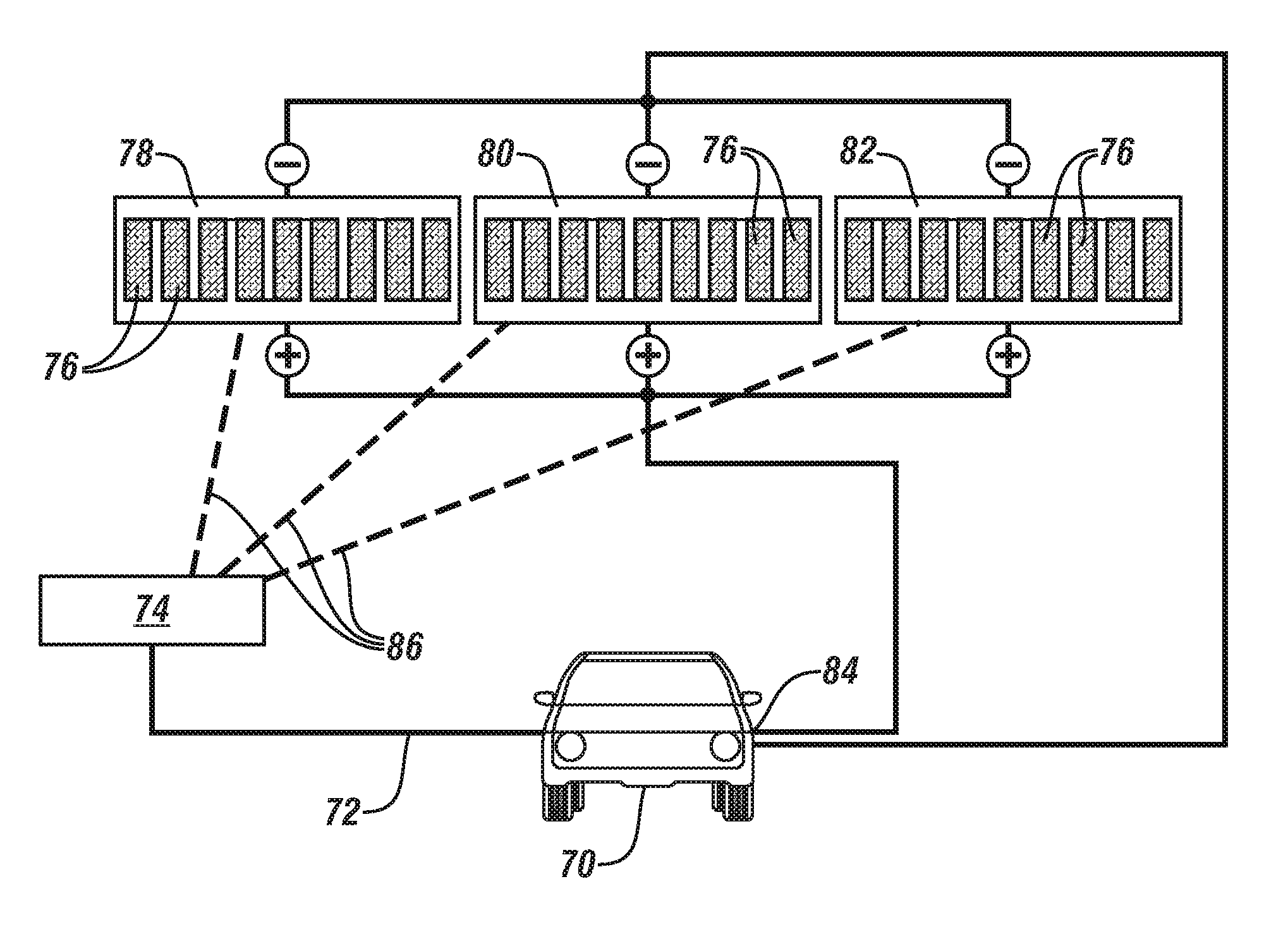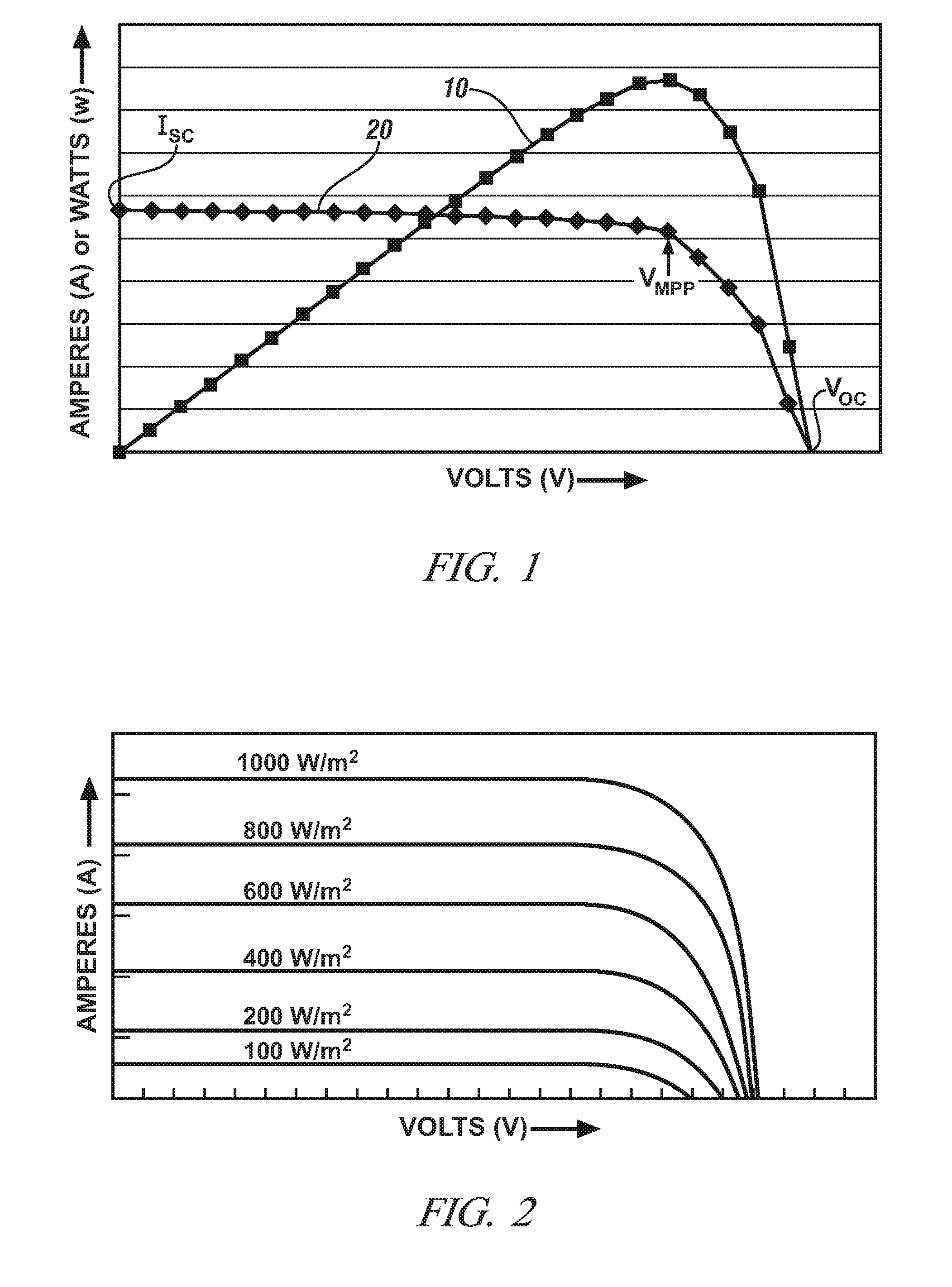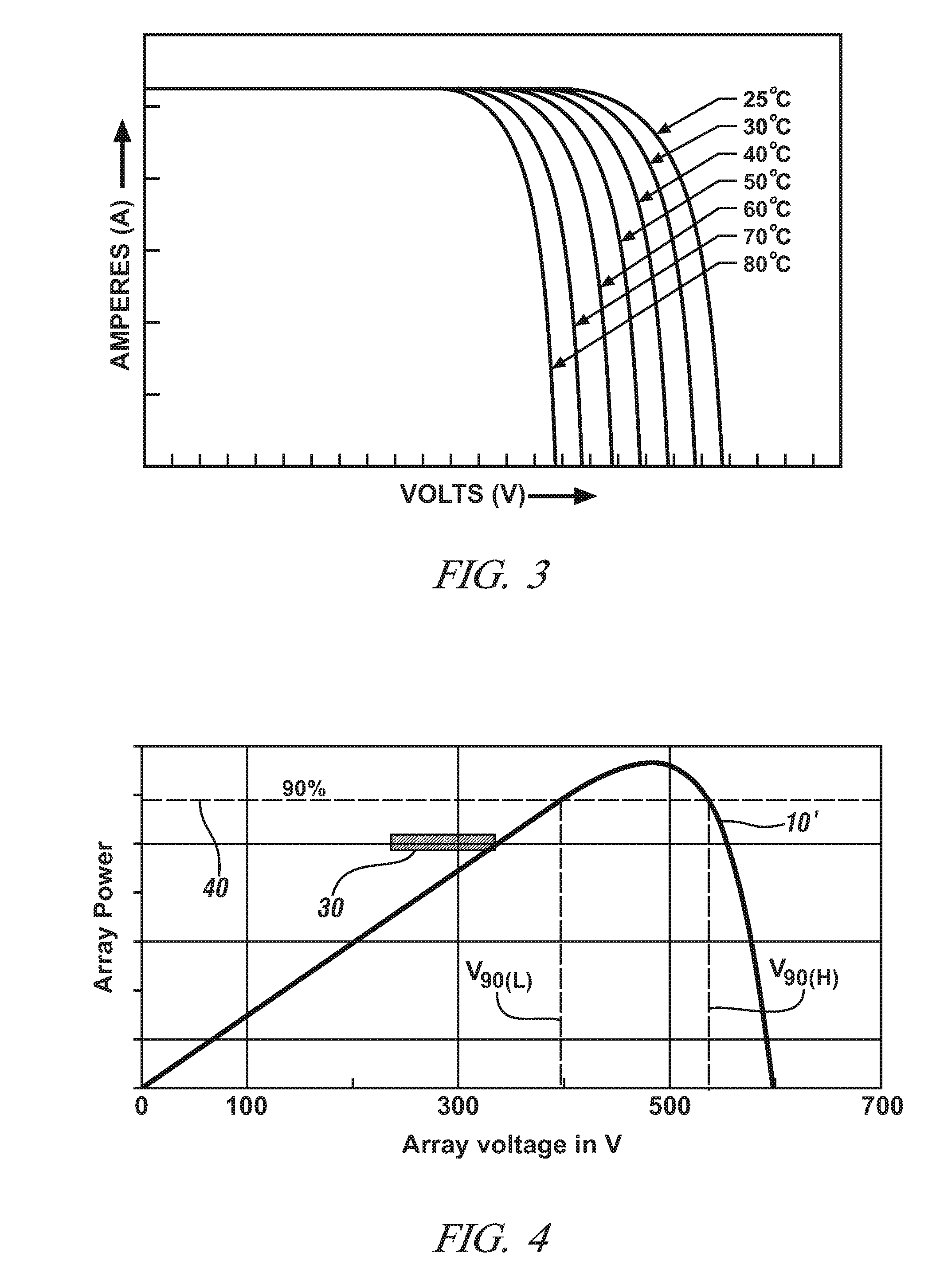Photo-voltaic charging of high voltage traction batteries
a high-voltage traction, photo-voltaic technology, applied in the direction of pv power plants, secondary cells servicing/maintenance, electrochemical generators, etc., can solve the problems of impracticality of low-voltage high-current systems, solar cells are not particularly efficient in converting sunlight to electricity, etc., to shorten the useful life, maintain battery performance, and manage the operating range of batteries
- Summary
- Abstract
- Description
- Claims
- Application Information
AI Technical Summary
Benefits of technology
Problems solved by technology
Method used
Image
Examples
Embodiment Construction
[0038]The following description of the embodiment(s) is merely exemplary in nature and is not intended to limit the invention, its application, or uses.
[0039]In hybrid and electric vehicles, which employ electric motor propulsion systems, at least a portion of the energy needed to propel the vehicle is stored in rechargeable, high capacity, high voltage traction batteries. When such batteries are discharged they must be recharged. Current practice is to use either an on-board internal combustion (IC) engine operating an alternator or to use alternating current (AC) power, obtained from a local utility or a combination of these approaches. Of course in both these approaches the AC power must be converted to direct current (DC) power to be compatible with the DC character of the battery.
[0040]An alternative approach is to use solar power obtained from solar photovoltaic systems to charge the traction battery. Since many vehicles see only limited use during the business day when sunlig...
PUM
| Property | Measurement | Unit |
|---|---|---|
| voltage | aaaaa | aaaaa |
| charge voltage | aaaaa | aaaaa |
| voltage | aaaaa | aaaaa |
Abstract
Description
Claims
Application Information
 Login to View More
Login to View More - R&D
- Intellectual Property
- Life Sciences
- Materials
- Tech Scout
- Unparalleled Data Quality
- Higher Quality Content
- 60% Fewer Hallucinations
Browse by: Latest US Patents, China's latest patents, Technical Efficacy Thesaurus, Application Domain, Technology Topic, Popular Technical Reports.
© 2025 PatSnap. All rights reserved.Legal|Privacy policy|Modern Slavery Act Transparency Statement|Sitemap|About US| Contact US: help@patsnap.com



